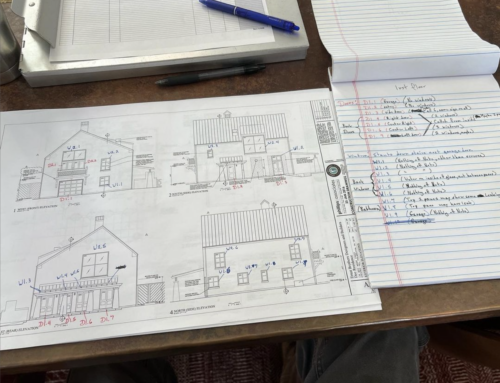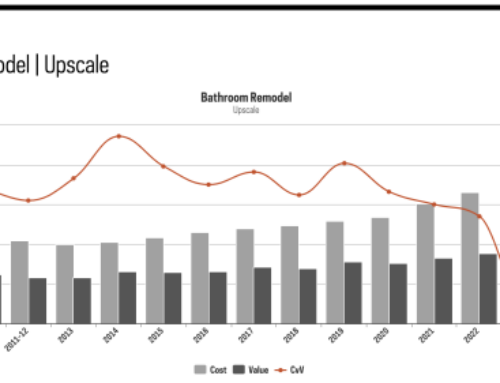Where Is the Lead?
Today I met the Certified Lead Inspector at our RDA/NSP House. Here are some photos of him and his fancy $15,000 “ray gun” in action.
His gun shoots and captures reflected X rays off the lead content inside the layers of paint to create a lead level reading for that surface. Readings are taken for each surface in every room of the house and outside the house as well. These readings are recorded in the gun, and then downloaded into our project home’s digital file. Additionally, we get a write up with a floor plan of each floor of the house. The inspector interprets the readings for us and makes renovation and remediation recommendations to us. Only the inspector is qualified to interpret this data.
You may remember this is a flip house we will be renovating for the city’s Neighborhood Stabilization Program. Since the money for these renovations comes from HUD, we must test for lead and then follow the recommendations for managing the renovations to HUD lead safety standards, which are quite high.
Since we are RRP/EPA-certified renovators, we may do the demolition and renovation work. At the end of our renovation work, the house will be cleaned of lead to HUD standards and then retested for lead by the same certified lead inspector. Once the house meets HUD standards for lead safety, we can start marketing the house. We hope to have it sold this spring.
It costs a few hundred dollars to have a lead test like this done on a small house like this: 1,100 square feet of space, 3 bedroom and 1 bathroom. It was built in the 1930’s or 1940’s. Over 87% of these older homes do have lead in them. We know this because we work in them all the time.
As a homeowner, the best precautions you can take for any house older than 1978 are to not allow or create flaking paint in or on your house, especially on your trim work because this is where enamels were used, which often contained lead. It was also used on walls, in some circumstances. Other places to watch out for are door jambs where friction causes flaking, old painted wooden windows where paint is making flakes or dust, and some of the tile and metal work in an older home. Caution: If you vacuum it up, your vacuum will blow the dust around the house.
Homeowners can easily protect themselves by hiring EPA/RRP-certified contractors to do any work on their homes. New laws that go into effect in April require work that disturbs any area greater than 6 square feet to be conducted by an EPA/RRP-certified contractor.
Your realtor, your contractor or other folks who work in or around old houses will tell you lead is not a big deal. But when you find that your child has been exposed to it, you will feel differently. If you want to know where it is in your house, you need to call a certified lead inspector. Don’t take anyone else’s word for it.





